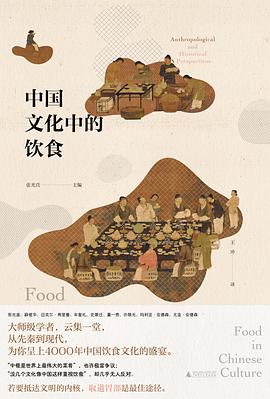WULOLIFE
《中国文化中的饮食》作者: 张光直 主编 / [美国] 史景迁 / [美国] 薛爱华 / 许烺光 / 牟复礼 出版社: 广西师范大学出版社
《中国文化中的饮食》作者: 张光直 主编 / [美国] 史景迁 / [美国] 薛爱华 / 许烺光 / 牟复礼 出版社: 广西师范大学出版社
Couldn't load pickup availability
Description
内容简介 · · · · · ·
【编辑推荐】
你可知道,第一块豆腐诞生于何时?筷子是什么时候首次使用?食物何时开始分阴阳、为何中国人讲究吃一口饭要配一口菜?
为什么在“饮食”这一领域,中国人展现出如此丰富的创造性?
★大师云集,共同执笔,系统研究中国饮食文化的开山之作
张光直,世界著名考古学家、美国国家科学院院士;
史景迁,当代最受瞩目的美国汉学家之一;
薛爱华,《撒马尔罕的金桃》作者、唐史研究重镇;
许烺光,心理人类学主要创始人、美国人类学会会长……
来自考古学、历史学、人类学等不同领域的顶级学者阵容,一人著述一个朝代的饮食风貌。既不乏学术研究的厚重,又具有面向大众的中华饮食史。
★考古遗迹、墓砖壁画、诗词歌赋、游记食谱、西方观察者的笔记,材料丰富,重构中国饮食全景图
从长沙马王堆出土的谷物、牲畜遗迹,到汉魏六朝墓地壁画中的庖厨图;从唐诗宋词中描绘的进士及第宴、家宴、离别宴,到明清老饕妙笔生花的各色食谱;从清代官颁条规《光禄寺则例》记载的“满汉全席”,到近代来华的西方观察者面对中国菜的惊异、赞叹、沉醉……
结合新近考古发掘成果与浩如烟海的文献资料,通过严谨细致的论证分析,勾勒出中国饮食文化的全景式流览图。
★ 悉数娓娓道来
中华文明历来崇尚“民以食为天”。从古至今,天南地北,无论贫富,生活在中国这片土地上的人都吃些什么?又喜欢怎么吃?
先秦时代就已确立了“饭-菜”原则,并一直延续至今?
石榴、芝麻、洋葱、核桃?
来自西域、岭南、漠北的各种奇珍异馐,竟在唐代餐桌上引发了一场“饮食革命”?
两宋商业繁盛,夜市热闹非凡,为何知识分子却推崇“人间有味是清欢”?
近现代中国的五大菜系是如何确立的?粤菜又为何被视为世界上zui优之美食?
……
★ 铜版彩色插图,四色印刷,封面烫黑设计,精装典藏
【名人推荐】
中国的自然资源以及独一无二化的形成起这本书对中国饮食传统进行了宏阔的人类学研究,从饮作者们提供的丰富资料不仅为汉学研究,也为各类比较文化研究开辟了一个新的研究、分析与阐释的方向。
——许倬云
